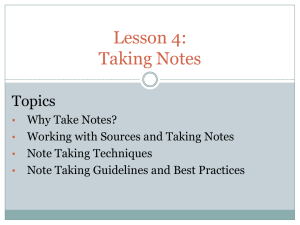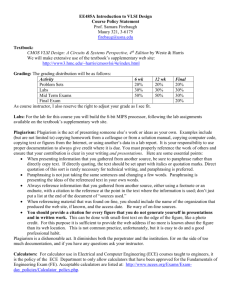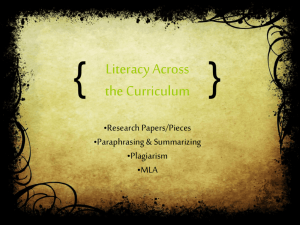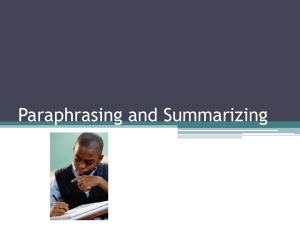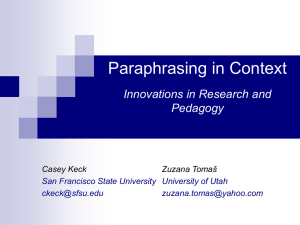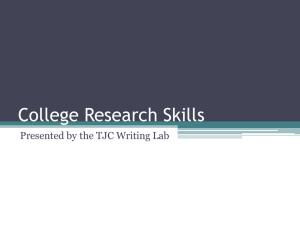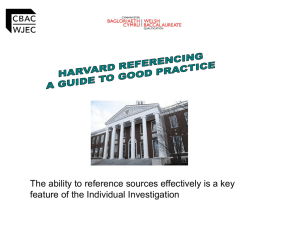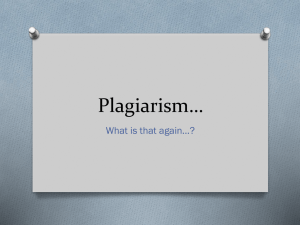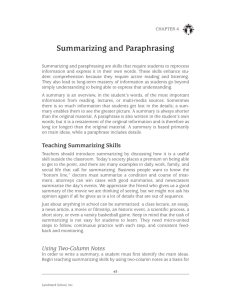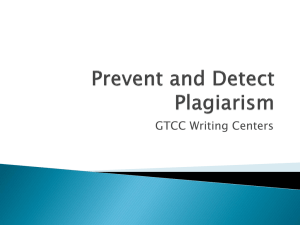paraphrasing-and-plagiarism - Academics
advertisement
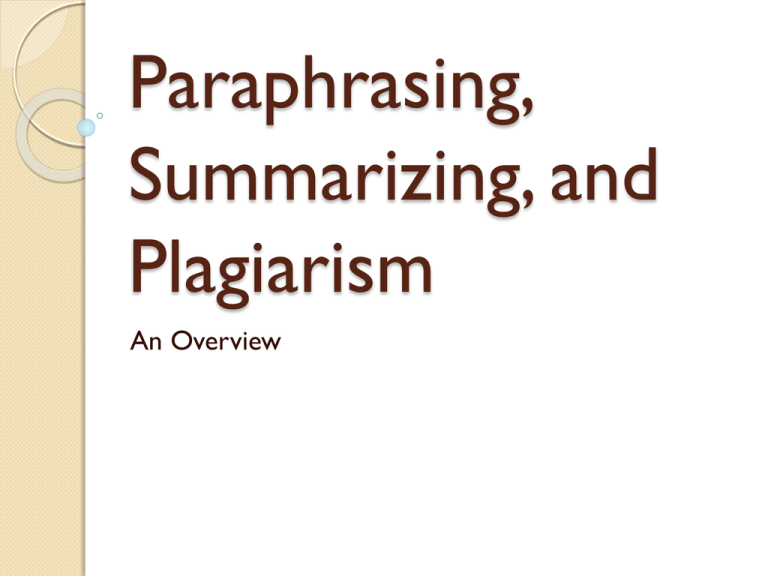
Paraphrasing, Summarizing, and Plagiarism An Overview Paraphrasing What is paraphrasing? ◦ A way to incorporate a source’s ideas without directly quoting the source ◦ Using your own words to convey another author’s information ◦ Using a different sentence or paragraph structure to convey the information ◦ Usually a similar length as the original text Example of Paraphrasing Original: “As any publisher or filmmaker can attest, Jane Austen is a hot literary commodity. Every week seems to bring a new continuation, reimagining, mashup, or modernization of her novels” (Jerrit, 107). Paraphrasing: Jane Austen is a popular figure in literature and movies today. Her novels have been transformed and adapted to fit the modern world (Jerrit, 107). Summarizing What is summarizing? ◦ A way to include information without directly quoting the source ◦ Using your own words and structure ◦ A way to give a brief overview of information from another source ◦ Shorter than the original text Example of Summarizing Original: “Today more than 23 million U.S. children and adolescents are either obese or overweight. Being overweight during childhood increases the risk of developing diseases such as high cholesterol, hypertension, respiratory ailments, orthopedic problems, depression and type 2 diabetes. Of particular concern is type 2 diabetes, which has increased dramatically in children and adolescents, especially in the African American population” (Green, Riley, and Hargrove 915). Summary: Millions of children and teenagers are overweight, which increases the likelihood that these children will develop diseases later in life. Due to the increase in obesity, type 2 diabetes poses a specific problem for children and teens (Green, Riley, and Hargrove 915). Plagiarism Using another person’s work without citing the source Incorrectly citing a source Incorrectly paraphrasing Incorrectly summarizing Examples of Plagiarism Original: “Curriculum concerns for the obese should include instructions in nutrition, individual and group counseling, exercise classes, and training in eating control techniques” (Green, Riley, and Hargrove 917). Plagiarism: Curriculum for obese children should include instructions in individual and group counseling, nutrition, training for eating control practices, and exercise classes (Green, Riley, and Hargrove 917). Common Mistakes to Avoid Make sure that when paraphrasing and summarizing, the original message and intent of the author is still clear Make sure that a direct quotation is not taken out of context of the rest of the text Works Cited Jerrit, Jessica. "No Persuasion Necessary: Jane Austen's Eternal Appeal." Library Journal 135.15 (2010): 107. Academic Search Complete. Web. 1 Nov. 2012. Green, Gregory, Clarence Riley, and Brenda Hargrove. "Physical Activity And Childhood Obesity: Strategies And Solutions For Schools And Parents." Education 132.4 (2012): 915-920. Academic Search Complete. Web. 1 Nov. 2012. “Paraphrasing vs. Plagiarizing (76a).” University of Mary Washington Writing Center. Print.
